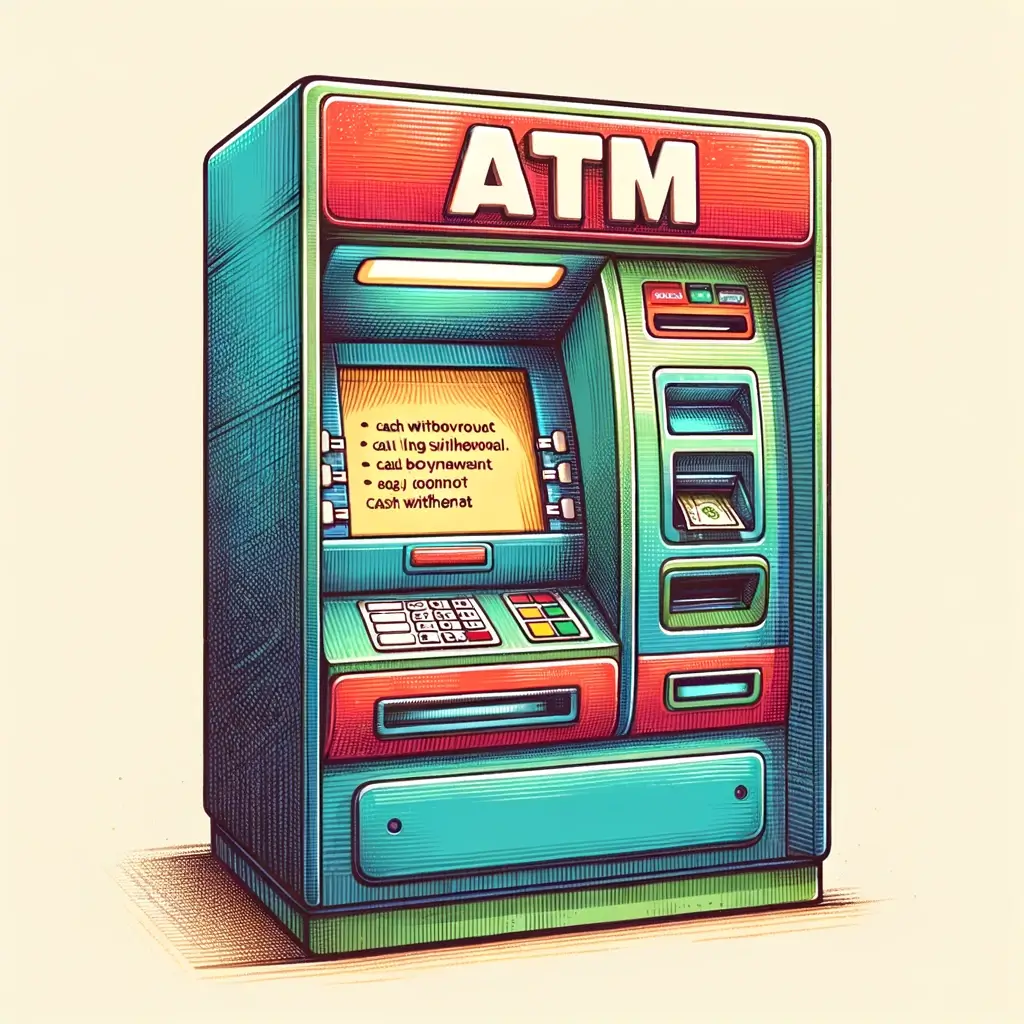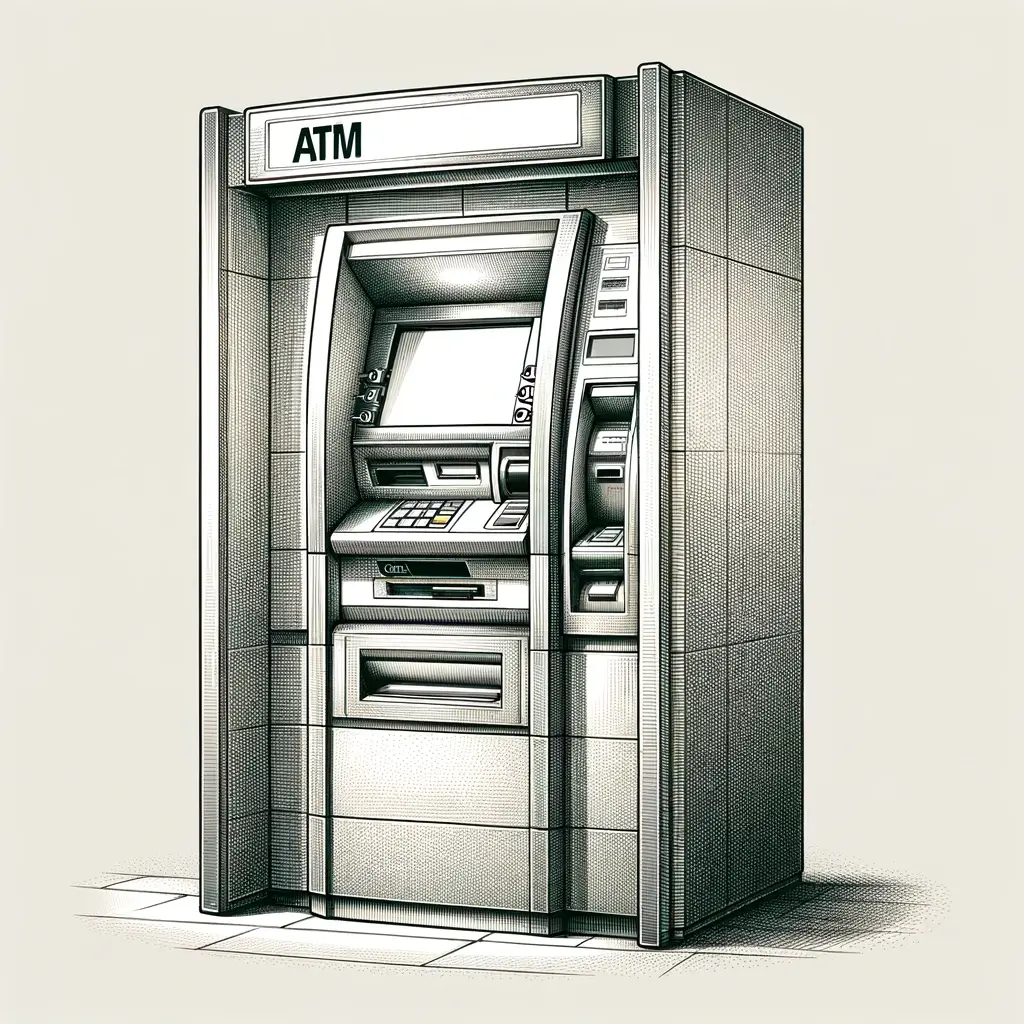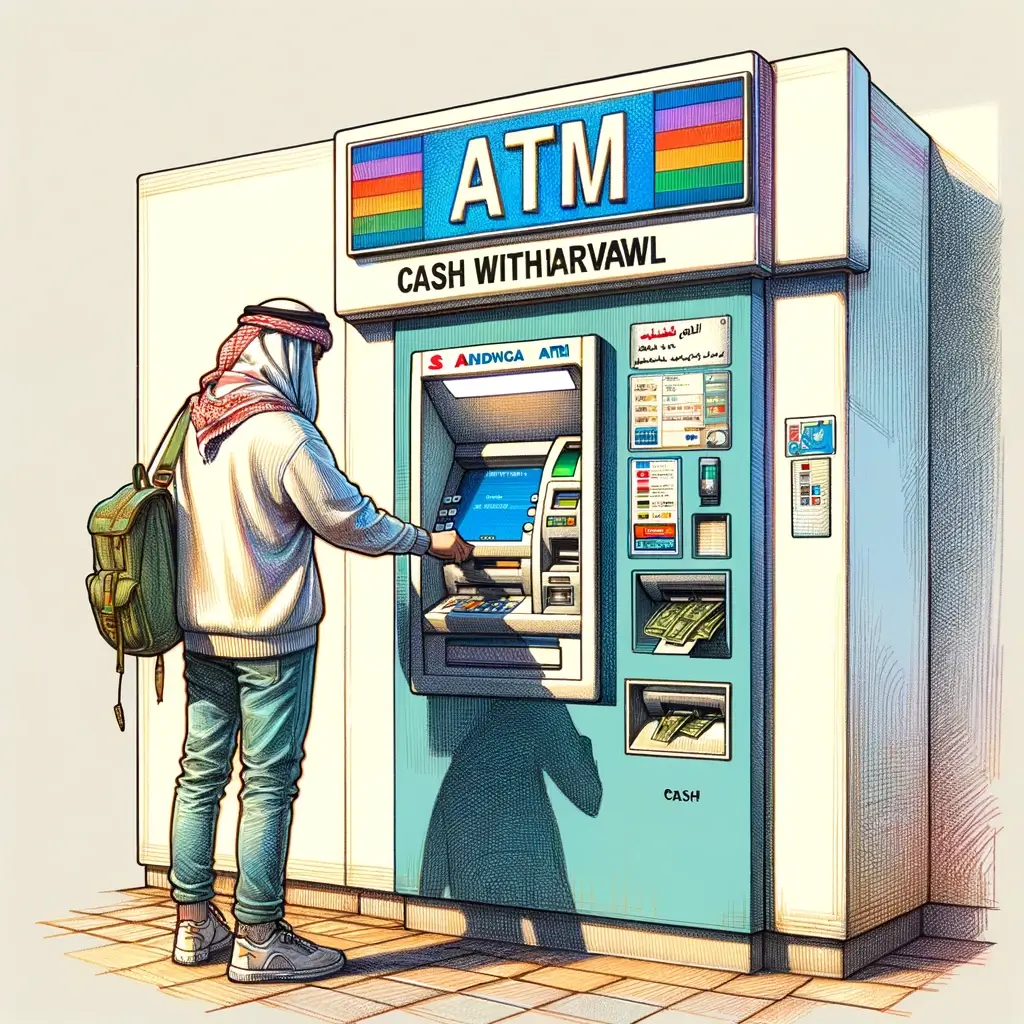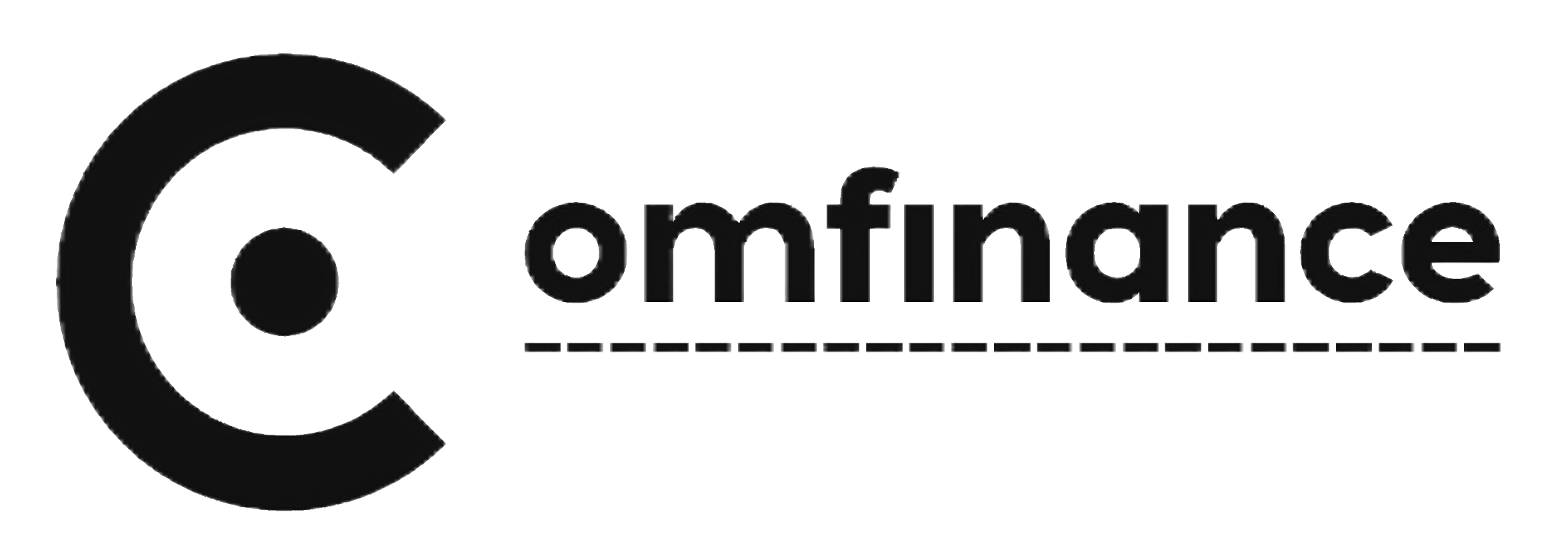What Exactly Is An ATM And How Does It Work
The Automated Teller Machine (ATM) has become a fundamental part of how we handle money today. Easily found from small towns to the centers of big cities, ATMs have made banking more accessible than ever. They are not just for withdrawing cash alone, but they are also the key tools for a range of banking tasks, that are available at any time of the day.

ATMs represent a significant shift in how we bank. They allow us to deposit checks, withdraw cash, and check our account balances without waiting in line at a bank. This convenience has changed our approach to managing money, making these tasks quick and secure with just a card and a few button presses.
Exploring how ATMs work reveals a blend of convenience and security. These machines do more than dispense cash; they give us control and reassurance in our financial dealings. The ATM has become an essential part of our daily financial routine, making banking straightforward and efficient.
In this article, we’re exploring ATMs in detail. You’ll learn exactly how these machines function, the security steps that safeguard your transactions, and the newest developments in ATM technology. We’ll also share useful tips on avoiding extra fees and using ATMs smartly during your travels. By the time you finish reading, you’ll have a thorough understanding of ATMs, enhancing your confidence and knowledge of everyday banking.
What Exactly Is An ATM, And How Does It Work
Key Insights
- Contrary to common belief, ATMs let you do various banking tasks, not just taking out cash.
- Some ATMs only give out cash, but others let you deposit checks, check your balance, and move money between accounts.
- The first ATMs started in the 1960s. Now, there are over 2 million of them all over the world.
- Today’s ATMs can take deposits and do other banking jobs, showing how much they’ve changed over time.
- To cut down on ATM fees, use your bank’s ATMs. Many banks have apps to help you find ATMs where you won’t be charged.
- ATMs today are built with strong security to keep your transactions safe.
- ATMs are keeping up with technology, adding features like touchless use and working with banking apps.

The Evolution of ATMs
The story of the Automated Teller Machine (ATM) is a fascinating chapter in the history of banking and technology. The first recognized ATM made its debut at a Barclays Bank branch in London in 1967, a groundbreaking moment that reshaped banking. However, this wasn’t the only early development in cash dispensing technology. Reports suggest that a similar machine was already in operation in Japan in the mid-1960s, hinting at a parallel evolution of this technology in different parts of the world.
The 1970s marked a significant leap forward with the introduction of interbank communications networks. This innovation meant that consumers could use their bank cards at ATMs operated by other banks, a convenience that propelled the ATMs’ popularity and utility. The interbank network was a game-changer, making ATMs a more versatile and indispensable tool in personal finance.
The rapid spread of ATMs globally is a testament to their impact. Within just a few years of their introduction, ATMs had found their way into nearly every major country, transforming the banking experience on a global scale. Their reach extended even to remote and smaller nations, such as Kiribati and the Federated States of Micronesia, underscoring the universal appeal and utility of these machines. The global proliferation of ATMs reflects not just technological advancement but also a growing demand for accessible banking services.
Interestingly, ATMs are known by various names around the world, including automated bank machines (ABMs), cash points, and cash machines. This diversity in nomenclature highlights the cultural integration of ATMs into different societies.
The journey of the ATM from a novel invention to a global banking staple is a story of innovation, adaptation, and widespread acceptance. As we look back on this journey, detailed in articles like The Atlantic’s brief history of the ATM, it’s clear that ATMs have not only changed the way we bank but have also become a symbol of the convenience and efficiency that technology can bring to our everyday lives.
Understanding the Different Types of ATMs
ATMs have evolved to meet diverse banking needs, broadly categorized into two main types. Each type offers different functionalities, catering to the varying requirements of users.
2. Basic ATMs: These are the most commonly seen ATMs, primarily focused on providing quick cash withdrawal services. They are straightforward in their operation, allowing users to withdraw cash and check their account balances. Basic ATMs are user-friendly and are typically found in a wide range of locations due to their simplicity and the essential services they offer.
2. Advanced ATMs: On the other end of the spectrum are the more complex ATMs, equipped with a broader range of banking capabilities. These advanced machines not only handle cash withdrawals and balance inquiries but also accept deposits. They can facilitate payments towards lines of credit, enable fund transfers between accounts, and provide detailed account information. To utilize the full range of services offered by these advanced ATMs, you usually need to be an account holder with the bank that operates the machine. This requirement ensures secure access to more sensitive banking operations.

The choice between basic and advanced ATMs depends on the specific banking needs of the user. While basic ATMs cater to quick and simple transactions, advanced ATMs offer a more comprehensive range of banking services akin to a mini bank branch.
Exploring the Core Components of an ATM
An ATM might seem like just a box, but it’s a sophisticated piece of technology. Each part plays a crucial role in ensuring your banking experience is smooth and secure:
Card Reader: The card reader is the initial point of interaction between you and the ATM. When you insert your card, this device reads the data stored on the chip or the magnetic stripe. This process is crucial for verifying your account details and ensuring that the ATM accesses the correct account for your transaction. It’s a blend of precision and security, making sure that every transaction starts off on the right foot.
Keypad: The keypad is your primary tool for communicating with the ATM. Here, you enter your PIN, a unique identifier that validates your identity. Additionally, the keypad is used to input transaction details, such as the type of transaction (withdrawal, balance inquiry, etc.) and the amount of money involved. The tactile buttons and responsive interface ensure that your input is registered accurately, making the transaction process smooth and user-friendly.
Cash Dispenser: This is where the tangible part of the transaction happens. Once your transaction is authenticated, the cash dispenser activates, pulling bills from a secure compartment and dispensing the requested amount. This compartment is meticulously managed and refilled by bank personnel through the backdoor, ensuring that the ATM is always ready to meet your cash needs. The dispenser’s mechanism is designed for accuracy, dispensing the exact amount every time. Oh, don’t worry; the machine rarely makes mistakes; if ever, what you requested is what you will get 😉
Printer: For those who need a physical record of their transactions, the printer in an ATM is indispensable. It provides a receipt detailing the transaction type, the amount involved, and the updated balance of your account. This piece of paper serves as a handy reference for your financial records, offering peace of mind and a trail of your banking activity.
Screen: The screen of an ATM is your guide through the entire transaction process. It displays easy-to-follow instructions, provides feedback on your inputs, and shows crucial information like your account balance. The clarity and simplicity of the screen’s interface make it easy for users of all ages and tech-savviness to complete their transactions without confusion.
Camera: Banks are taking the security of users more seriously, and ATMs have adapted by incorporating cameras. These cameras serve multiple purposes, from deterring fraudulent activities to enabling advanced features like face ID verification. This addition enhances the overall security of your transactions, ensuring that your banking experience is not only convenient but also safe.
Thumbprint Scanner: The latest innovation in ATM technology is the thumbprint scanner. This feature marks a significant leap towards more secure and convenient banking. It allows for cardless transactions, enabling you to access your account and perform transactions with just your thumbprint. This biometric technology adds an extra layer of security and is particularly useful if you forget your card or prefer a more secure way to access your account.
How to Use an ATM: A Simple Guide
Using an ATM is a straightforward process, designed to be user-friendly and secure. Here’s a step-by-step guide to help you navigate the process:
- Insert Your Card: Start by inserting your bank card into the card reader. This can be a debit or a credit card. The ATM reads the information from the chip on the front of your card or the magnetic stripe on the back, initiating the transaction process.
- Enter Your PIN: Once your card is recognized, the ATM will prompt you to enter your Personal Identification Number (PIN). This step is crucial for verifying your identity and securing your transaction.
- Select Your Transaction: The ATM screen will display various transaction options, such as withdrawing cash, checking your balance, or making a deposit. Use the keypad to select the transaction you wish to perform.
- Transaction Details: For a cash withdrawal, enter the amount you wish to withdraw. If you’re making a deposit or transferring funds, follow the prompts to complete these transactions.
- Receive Cash or Complete Transaction: For cash withdrawals, the ATM dispenses the cash through a slot. If you’re making a deposit or another type of transaction, the ATM will process your request accordingly.
- Transaction Receipt: If you require a receipt, the ATM can print one for you. This will include details of the transaction, such as the amount and your updated account balance.
- Retrieve Your Card: Don’t forget to take your card back once the transaction is complete.

ATMs are conveniently located in various places, including inside and outside bank branches, shopping centers, grocery stores, airports, and many other high-traffic areas. This accessibility makes it easy to perform your banking transactions from almost anywhere.
Modern ATMs have enhanced security features like cameras for face ID verification and thumbprint scanners for cardless withdrawals. These features add an extra layer of security, making your transactions not only convenient but also safe.
Understanding ATM Fees: What You Need to Know
ATM fees are a common concern for many bank account holders, especially when using ATMs outside their bank’s network. Here’s a breakdown of how these fees work and what you can expect:
- Using Your Bank’s ATMs: Generally, when you use an ATM operated by your bank, you won’t be charged a fee. This is one of the perks of staying within your bank’s network. For example, in Nigeria withdrawing cash through UBA with a UBA ATM card will attract no fee.
- Using Other Banks’ ATMs: If you use an ATM that belongs to a different bank, you’ll likely incur a fee. As reported by MoneyRates.com, the average total fee for withdrawing cash from an out-of-network ATM was around $4.55 in 2022. This fee is a combination of charges from the ATM operator and potentially your own bank. For example in Nigeria, if you use your atm card on a different bank ATM thrice within a month, you will be charged NGN67.
- Fee Reimbursement Policies: Some banks offer reimbursement for these fees, especially if their own ATMs are not available in your area. This policy can be a significant benefit if you frequently find yourself in places without your bank’s ATMs.
- The Cost of Regular Withdrawals: ATM fees can accumulate over time, particularly for those who regularly use out-of-network ATMs. For instance, if you withdraw cash weekly from an ATM that charges $4 per transaction and it’s not your bank’s ATM, you could end up paying over $200 in fees annually.
Being aware of these fees and planning your ATM use can help you avoid unnecessary charges. It’s always a good idea to check your bank’s policy on ATM fees and to locate ATMs within your bank’s network to minimize costs. Additionally, considering the availability of fee reimbursements can be a deciding factor when choosing a bank for your needs.
Navigating ATM Withdrawals and Deposits: What You Need to Know
Withdrawal Limits at ATMs: The amount you can withdraw from an ATM varies depending on your bank and the specific account you hold. For example, some banks may set a daily limit of $300 for cash withdrawals, while others, like Citibank, might allow up to $1,500 per day, depending on your account type and standing. If you need to withdraw more than the set limit, you can request a temporary increase by contacting your bank or improving your banking status, such as by increasing your account balance. In Nigeria, as of the time of writing this article, you can only withdraw NGN20,000 Naira daily via your ATM due to recent currency scarcity.
Making Deposits at ATMs: Depositing cash or checks at an ATM is a convenient feature offered by many banks. The process can be as simple as inserting your checks or cash directly into the machine. Some ATMs might require you to use a deposit slip and an envelope for your money or checks. Remember to endorse the back of any checks with your signature and add a note like “For Deposit Only” for added security. Cash deposit ATMs are not common in Nigeria.
The First ATM in the U.S.: A bit of banking history – the first ATM in the United States was installed by Chemical Bank in Rockville Center, New York, in 1969. This was a significant milestone in banking technology, coming two years after Barclays introduced the first ATM in the U.K. By the end of 1971, the convenience of ATMs had spread globally, with over 1,000 machines installed worldwide.
The Bottom Line on ATMs: An ATM, or automated teller machine, is more than just a cash dispenser. It’s a versatile machine that allows you to perform a variety of banking transactions, from withdrawing cash to depositing checks, transferring balances, and even paying bills. Before using an ATM, you must be aware of any potential fees, especially if using a machine outside your bank’s network. Understanding these aspects can help you maximize ATMs while managing your finances efficiently.



